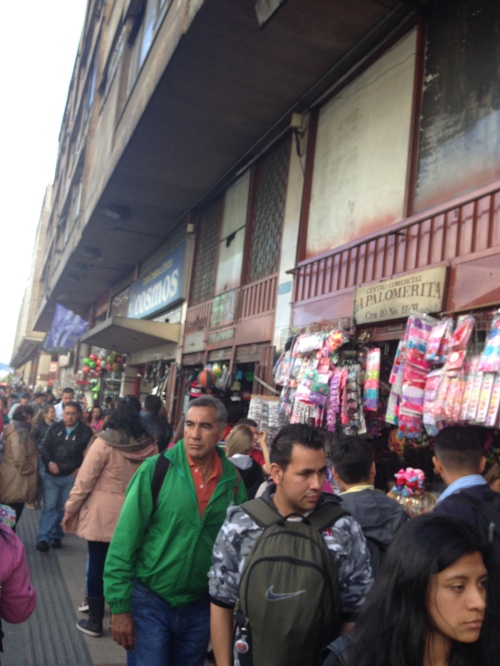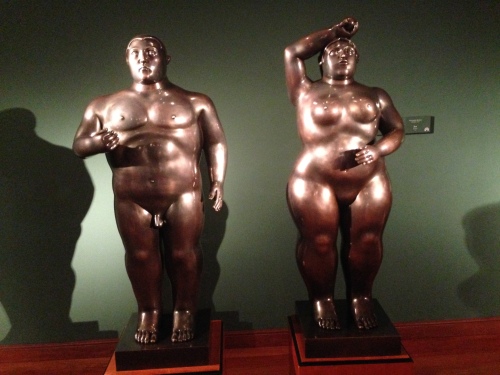Once a wanderer, always a wanderer. Three years ago I took off for Eastern Europe conversing with Jewish communities about identity. Little did I know how much those conversations would become part of my identity and world view. These past years found me physically in New York, but mentally in transit. Last Yom Kippur I decided it was time to reconcile my mental and physical states and temporarily changing countries. That’s the cliff note version of how I now find myself in Columbia – looking for an English teaching job. Like I said – cliff note version.

Every country has their ‘coca cola’ sign – perhaps most appropriate here? This was taken at the modern art museum
This is the beginning of conversational journey 2.0: I’ll be connecting with the Jewish community here (as soon as I get security approved – more on that later). Thought I expect to take lots of side trips on this road including staying here for several months and teaching English (I hope). Columbia is a country in flux, with a presidential vision to become the premiere seat of Latin America. Increasing English fluency is part of that vision, and I hope to be part of it. Three days into my ‘trip’, I’m feeling differences between Latin America and Eastern Europe: or is it my filter? Is it just that I feel different? I suppose time will tell.
If you’re wondering why I didn’t go back to Eastern Europe to teach English – good question: it is hard for Americans (with no experience) to find jobs. Companies prefer to hire people with EU passports with no need for visas. Besides, I now have the opportunity to explore a new part of the world, with a different history and very different culture.

The city center is filled with stalls and was crowded with Saturday shoppers. Different – but with a touch of NYC’s Chinatown
One thing is for sure – language – or more specifically a common language – is key. When I first traveled to Soviet Eastern Europe over thirty years ago, my non-verbal communication and an occasional word got me by with shared laughter and (I think) understanding. The power of youth prevented the lack of a common language from being a barrier. Three decades later, in 5772, it was verbal communication that secured my trip’s meaning and connection. Lucky for me, English is, and is becoming, the international language.
English need = Linda’s job opportunity!
As my 2014/5775 trip began on LAN airlines from Miami to Bogotá, English was the obvious step-child. Translations were rushed and not well enunciated. You’ll be happy to know I made it through the flight – and more importantly through customs with my less than mediocre Spanish. Seeing the sites requires open eyes, listening to stories requires an open mind – and a common language. I’m dusting off and polishing my Spanish with the expectation I’ll understand the flight attendants on my December return flight.

Bogotá has a superior network of art museums. Most famously, the Museo de Botero, which highlights Botero’s work. A larger version of these statues welcome visitors to the Time Warner building in NYC’s Columbus Circle.
I’m used to diversity in New York. A daily ride on the subway was shared with people and languages from all over the world. Still, it was my English and my culture that kept me safe while feeding my sense of worldliness. Non-english speakers traveling to the states were seen huddled around maps on street corners. They were unable to ask for directions. What a lonely way to travel – as I’m experiencing right now. I’m doing a darn good job of just smiling and nodding.
So I start this new journey without a clear path or even final destination. I’ll listen and learn from those I meet, while listening and learning from my own experiences as a newly minted expat teacher. Stay tuned and share any advice or thoughts on teaching abroad or learning a new language.
Wishing you great conversations!





















































